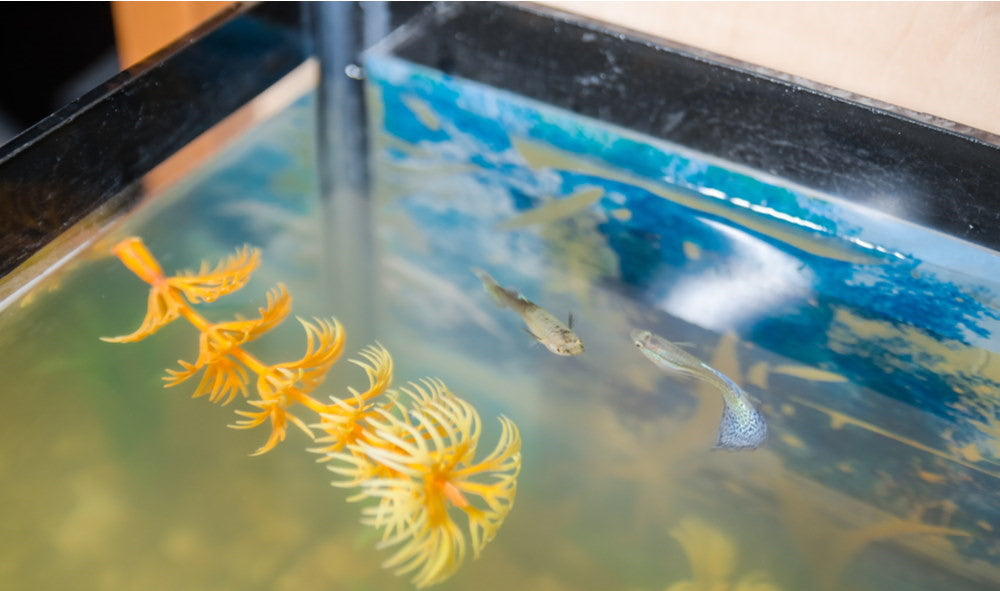Introduction:
Maintaining a healthy aquatic environment for your fish requires diligence and attention to detail. One common issue that many aquarists encounter after performing a water change is cloudy water. Cloudiness can be caused by various factors, ranging from harmless debris to more serious issues like bacterial blooms or chemical imbalances. In this guide, we’ll explore the possible reasons for cloudy water and provide troubleshooting tips to help you restore clarity to your fish tank.
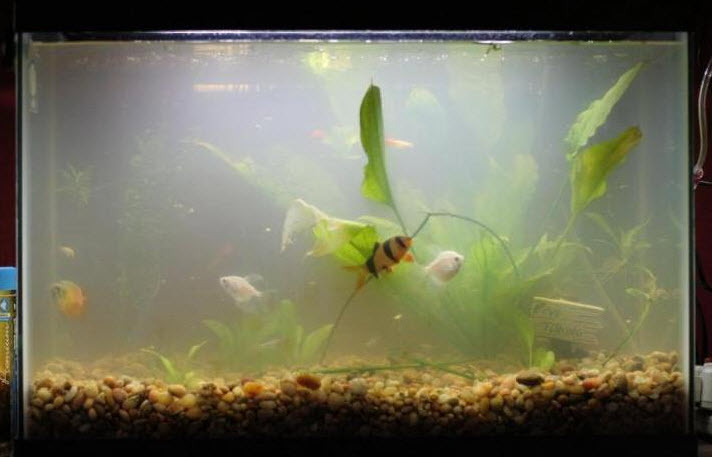
Understanding Cloudy Water:
Before diving into troubleshooting, it’s essential to understand the different types of cloudy water and their potential causes.
- Particulate Matter Cloudiness: Particulate matter cloudiness is the most common type and is often caused by suspended particles in the water. These particles can include uneaten fish food, fish waste, and debris from plants or substrate.
- Bacterial Bloom Cloudiness: Bacterial blooms occur when there is a sudden increase in beneficial bacteria population in the aquarium. While beneficial bacteria are essential for maintaining water quality, an overabundance can lead to cloudy water.
- Chemical Imbalance Cloudiness: Cloudiness can also result from chemical imbalances in the water, such as high levels of ammonia, nitrites, or nitrates. These compounds are harmful to fish and can indicate poor water quality.
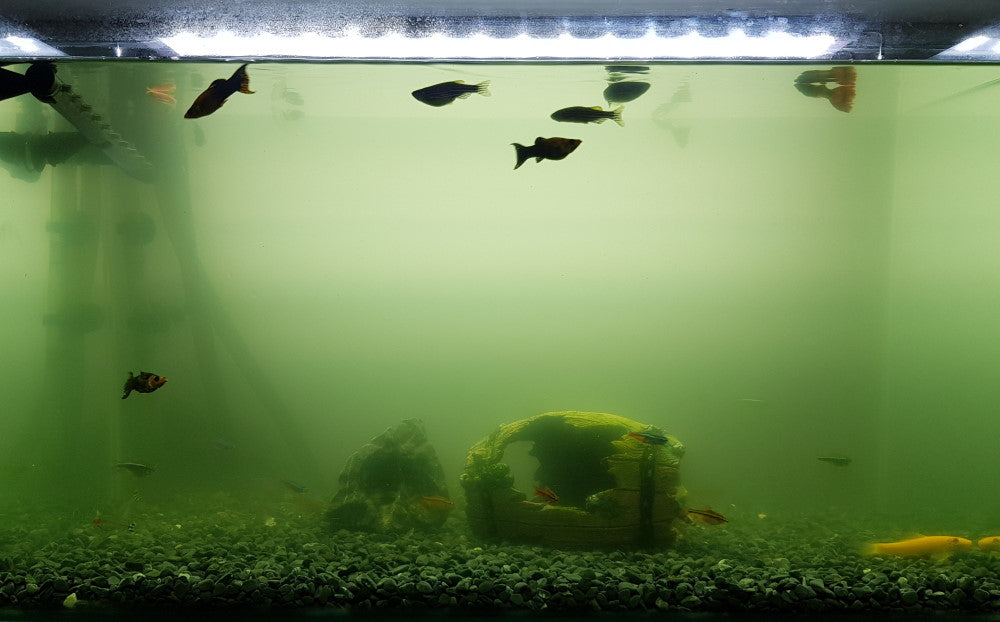
Troubleshooting Cloudy Water:
Now that we’ve identified the types of cloudy water, let’s explore troubleshooting steps for each scenario.
- Particulate Matter Cloudiness:
- Perform Regular Water Changes: Regular water changes help remove excess debris and maintain water clarity.
- Clean Filtration System: Ensure that your aquarium filter is clean and functioning correctly. Replace or rinse filter media as needed to prevent debris buildup.
- Vacuum Substrate: Use a gravel vacuum to remove debris from the substrate during water changes. This helps prevent particles from becoming suspended in the water column.
- Bacterial Bloom Cloudiness:
- Avoid Overfeeding: Overfeeding can lead to an increase in organic waste, fueling bacterial blooms. Feed your fish sparingly and remove any uneaten food promptly.
- Monitor Water Parameters: Regularly test your aquarium water for ammonia, nitrites, and nitrates. Maintain appropriate levels through water changes and proper filtration.
- Consider Beneficial Bacteria Supplements: Adding beneficial bacteria supplements can help establish a balanced microbial community in the aquarium, reducing the risk of bacterial blooms.
- Chemical Imbalance Cloudiness:
- Test Water Parameters: Use a reliable water test kit to monitor ammonia, nitrite, nitrate, pH, and other essential parameters. Take corrective action if any levels are out of range.
- Perform Partial Water Changes: If ammonia, nitrite, or nitrate levels are high, perform partial water changes to dilute the concentration of these compounds.
- Use Water Conditioners: Use water conditioners to neutralize harmful chemicals like chlorine and chloramine, which can stress fish and disrupt the aquarium ecosystem.
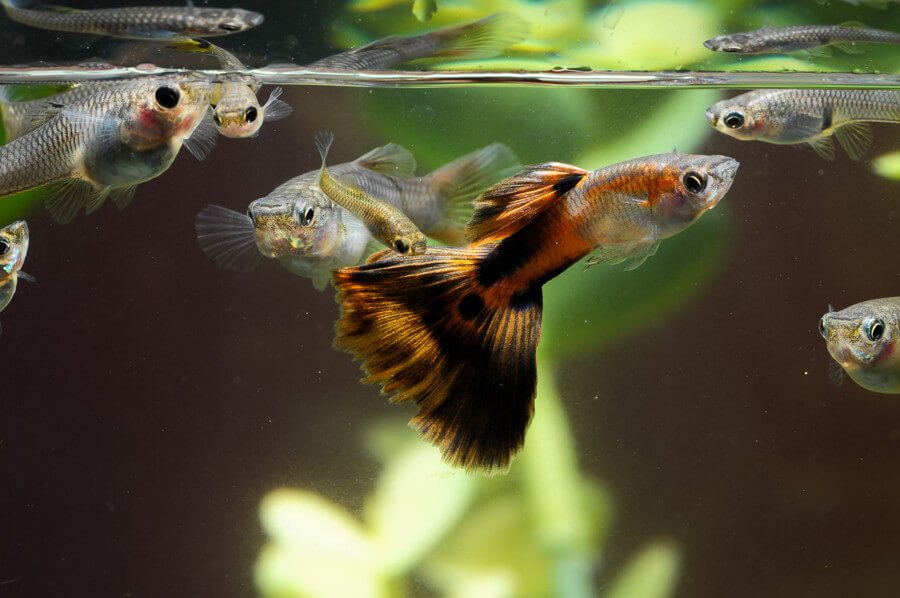
Preventing Cloudy Water:
While troubleshooting cloudy water is essential, prevention is the best approach to maintaining water clarity in your fish tank.
- Establish a Regular Maintenance Routine: Implement a consistent schedule for water changes, filter maintenance, and aquarium cleaning to prevent the buildup of debris and waste.
- Monitor Fish Stocking Levels: Avoid overcrowding your aquarium, as excess fish waste can contribute to cloudy water and poor water quality.
- Choose Compatible Tankmates: Select fish and invertebrates that are compatible in terms of size, temperament, and water parameters to minimize stress and waste production.
- Quarantine New Additions: Quarantine new fish and plants before introducing them to your main aquarium to prevent the introduction of diseases and parasites.
- Monitor Water Quality Parameters: Regularly test the water quality parameters such as temperature, pH, hardness, and dissolved oxygen levels. Fluctuations in these parameters can stress fish and compromise their immune system, leading to cloudy water and other health issues.
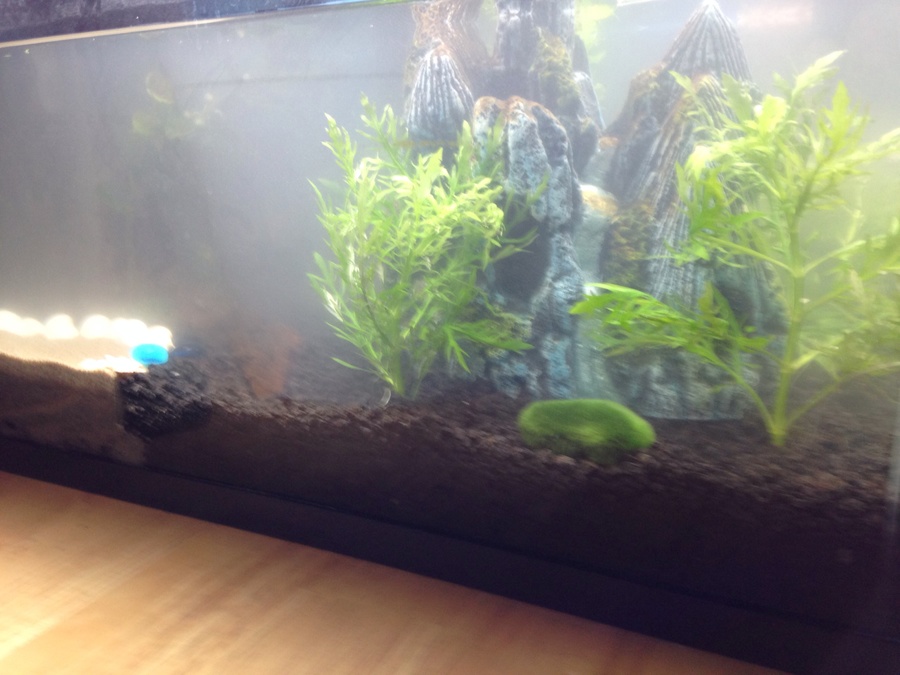
About Troubleshooting Your Fish Tank After a Water Change
Ensure Proper Oxygenation: Adequate oxygenation is crucial for the overall health of your fish and the stability of the aquarium ecosystem. Use an air pump or powerhead to create surface agitation and promote gas exchange, ensuring that oxygen levels remain optimal.
Maintain a Balanced Aquatic Ecosystem: Aim for a balanced ecosystem by incorporating live plants and beneficial microorganisms. Live plants help absorb excess nutrients, oxygenate the water, and provide natural filtration, while beneficial microorganisms help break down organic waste and maintain water quality.
Address Algae Growth: Algae growth can contribute to cloudy water and compete with your fish for resources. Implement measures to control algae growth, such as limiting light exposure, reducing nutrient levels through water changes, and introducing algae-eating organisms like snails or algae-eating fish species.
Consider UV Sterilization: UV sterilizers can be effective in controlling bacterial blooms and algae outbreaks by exposing the water to ultraviolet light, which kills harmful microorganisms and algae cells. However, UV sterilization should be used cautiously and as a supplementary measure, not as a sole solution for water quality issues.
Seek Professional Advice: If you’ve tried troubleshooting on your own and still struggle with cloudy water, don’t hesitate to seek advice from experienced aquarists or consult with a professional aquarium maintenance service. They can provide personalized recommendations based on your specific aquarium setup and help you resolve persistent issues.
Educate Yourself: Continuously educate yourself on proper aquarium care techniques, fish species requirements, and water chemistry principles. Resources such as books, online forums, and reputable aquarium websites can provide valuable insights and guidance to help you become a knowledgeable and confident aquarist.
Be Patient and Persistent: Resolving cloudy water issues may take time and experimentation. Be patient and persistent in implementing solutions, and don’t be discouraged by setbacks. Monitor changes in water clarity and fish behavior closely, adjusting your approach as needed until you achieve the desired results.
Foster a Healthy Fish Environment: Beyond addressing immediate water quality concerns, prioritize the overall well-being of your fish by providing a stimulating and enriching environment. Consider factors such as tank decor, hiding places, and social dynamics among fish species to promote natural behaviors and reduce stress.
Conclusion:
Cloudy water can be a frustrating issue for aquarium hobbyists, but with proper troubleshooting and preventative measures, it can be effectively managed. By understanding the causes of cloudy water and implementing appropriate solutions, you can maintain a clean and healthy environment for your aquatic pets to thrive. Remember to stay vigilant and proactive in your aquarium maintenance routine to prevent future occurrences of cloudy water.






